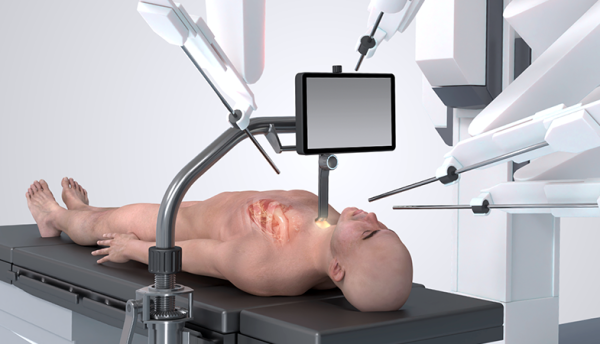A Glasgow-based company has played a leading role in bringing the world’s first robotic aortic valve replacement through a tiny incision in the neck significantly closer to reality.
CardioPrecision – a specialist in less invasive treatment of structural heart disease – recently demonstrated a proof-of-concept AVATAR (Advanced Videoscopic Aortic valve surgery by Transcervical Approach using Robot-assistance) procedure in Chicago.
The procedure was successfully performed on a series of human cadavers, representing an important milestone in progressing towards clinical cases while also continuing to grow CardioPrecision’s Stateside presence.
The company – originally spun out of the NHS through InnoScot Health – utilised its CoreVista Robot Enabling Platform as well as the PercevaL Plus sutureless aortic heart valve from UK-based Corcym, a global medical device company focused on the structural heart area.
CardioPrecision’s chief medical officer and consultant cardiothoracic surgeon, Fraser Sutherland worked closely with Rocco Bilancia, consultant thoracic surgeon at Scotland’s Golden Jubilee University National Hospital, to introduce AVATAR to leading US robotic surgeons, Professor Husam Balkhy from the University of Chicago Medicine and Professor Danny Ramzy at Memorial Hermann of University of Texas Houston.
A Scottish Government investment of around £20 million in 10 surgical robots was announced in 2021 and further investment in robotics is anticipated nationwide.
Prof Rowan Parks, President of Royal College of Surgeons of Edinburgh and previous Chair of the RCSEd Robotic Taskforce said: “There is clearly vast potential here and it is exciting to see a Glasgow company helping to lead the way while putting Scotland firmly on the map for this pioneering approach.
“Robotic cardiac surgery is much less invasive than open-heart surgery. Fundamentally, it removes the necessity of the surgeon having to cut through the breastbone to open the chest, in turn removing many access-related complications.
“This could well be just the start of more complex surgeries with quick advances being made, benefitting both patient and surgeon.”
Click below to share this article

